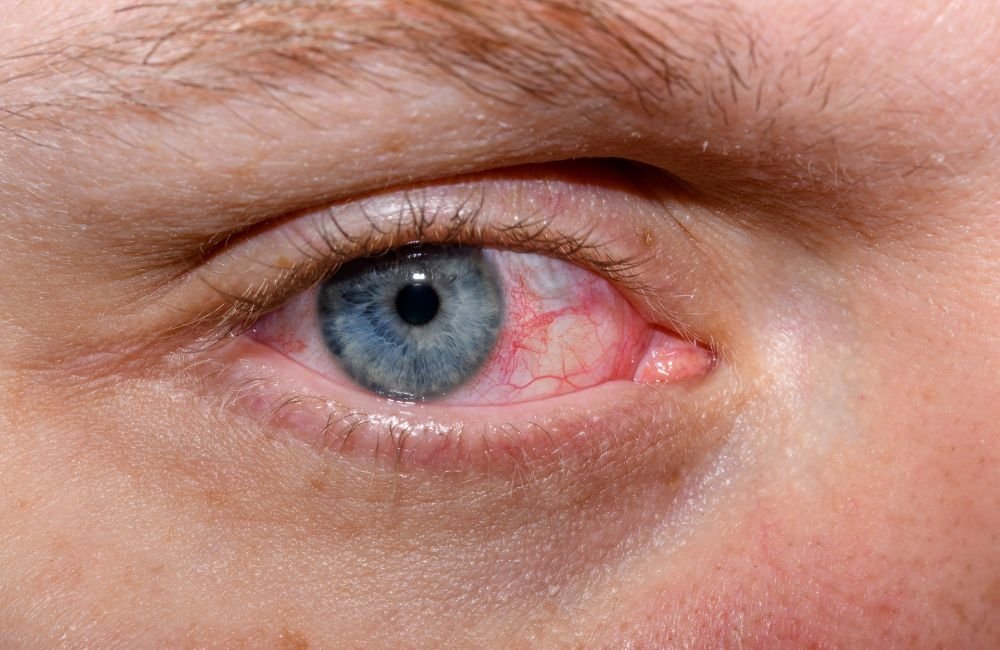NDP EyeCare | Dr. N D Patil | Dr. Gaurav Patil | Cataract | Glaucoma | Oculoplasty | LASIK
Our Latest Equipment is Best to keep your Vision perfect like Eagle!

Understanding Watering Eyes (Epiphora) and Why It Matters
Who Is Dr. N. D. Patil and What’s His Role in Treating Watering Eyes
Causes of Watering Eyes: What Triggers Excess Tears
To treat watering eyes effectively, Dr. Patil first identifies the root cause. Below are common factors that lead to epiphora:
Blocked tear drainage (nasolacrimal duct obstruction)
When tear ducts or canaliculi (tiny channels) get blocked, tears cannot drain, and overflow occurs.Punctal stenosis or malformation
When the small tear drainage openings (puncta) narrow or misplace, tears fail to enter the drainage system.Eyelid malposition (ectropion, entropion)
Eyelids that roll outward (ectropion) or inward (entropion) may prevent proper drainage.Excess tear production (reflex tearing)
Irritation from allergies, dry eye, foreign body, or ocular surface disease may provoke reflex tearing.Conjunctivitis or inflammation
Swelling of the conjunctiva (membrane covering the white of the eye) may block the drainage system.Obstruction from infection or trauma
Trauma or infections may cause scarring or block the lacrimal sac or duct.
Dr. Patil considers all these factors during clinical evaluation. Because multiple causes may coexist, he treats them together rather than in isolation.
Signs & Symptoms to Watch
Patients who come to Dr. Patil often report these complaints:
Constant tearing even without wind or emotion
Tearing that worsens in cold or windy weather
Blurred vision due to tears smearing the eyelid
Sticky lashes or discharge in the corner of the eye
Recurrent eye infections or red eyes
Swelling or pain near the tear sac (just beside the nose)
When someone presents these signs, Dr. Patil evaluates both symptom duration and severity before recommending interventions.
How Dr. Patil Diagnoses the Cause
To pinpoint the cause, Dr. Patil follows a structured diagnostic workflow:
Detailed patient history
He asks about symptom onset, duration, triggers (wind, cold, allergies), prior infections or surgeries.Slit-lamp examination
He examines eyelids, puncta, conjunctiva, and ocular surface to detect inflammation, eyelid problems, or tear film irregularities.Fluorescein dye test and dye disappearance test
He introduces a fluorescein dye into the eye and watches its disappearance. Slow clearance suggests drainage impairment.Lacrimal irrigation or syringing
Under gentle pressure, he injects saline through the tear duct from the punctum. If fluid fails to pass into the nose, obstruction exists.Probing or contrast imaging (dacryocystography)
He may pass a fine probe or use contrast dye with imaging to map the exact block in the lacrimal drainage system.Additional tests
He may order CT scans or nasal endoscopy if anatomical factors in the nose contribute to obstruction.
Only after completing these evaluations does he formulate a treatment plan tailored to each patient.
Treatment Options Offered by Dr. Patil
Dr. Patil offers a full spectrum of medical and surgical options to relieve watering eyes. He tailors the treatment to the severity and location of the problem.
Medical & Conservative Care
Lubricant eye drops
He uses them to stabilize tear film, reduce reflex tearing from irritation, and provide symptom relief.Anti-inflammatory drops or ointments
He reduces conjunctival or ocular surface inflammation that provokes tearing.Warm compresses and lid hygiene
For eyelid inflammation (blepharitis), he recommends warm compresses and cleaning the eyelid margins.Treating allergies or ocular surface disease
When allergies, dry eye, or conjunctivitis contribute, he provides antihistamines, mast cell stabilizers, or tear supplements.Balloon dacryoplasty (in selected cases)
He gently dilates stenotic parts of the duct using a small balloon under controlled conditions to restore drainage.
Minimally Invasive Surgical Procedures
Punctoplasty or punctal dilation
If puncta are narrowed, he enlarges them to allow tears to enter the drainage system efficiently.Canalicular stenting
He inserts tiny tubes (stents) through canaliculi to maintain patency while tissues heal.Dacryocystorhinostomy (DCR)
In patients who have blocked nasolacrimal ducts, he may perform DCR—creating a new passage between the tear sac and the nasal cavity. He offers both external (skin incision) and endoscopic (through the nose) approaches.Dacryocystectomy or excision
In rare, unsalvageable cases, he may remove the tear sac when it causes chronic infection.
Every procedure carries risks; Dr. Patil discusses them thoroughly so patients make informed decisions.
Prevention, Lifestyle & Tips to Reduce Eye Watering
While some tearing causes require medical treatment, patients can reduce symptoms and prevent worsening with these habits:
Avoid rubbing your eyes, which can irritate the surface and worsen reflex tearing.
Keep eyelids clean and free from debris with mild cleansers.
Use sunglasses or wrap-around eyewear outdoors to block wind or dust.
Avoid environments with smoke, strong fragrances, or allergens.
Control underlying conditions like allergies, dry eye, or blepharitis.
Attend regular eye checkups if you are prone to tear duct issues or ocular surface disease.
When patients adopt these practices, they often reduce discomfort even before formal treatment.
Why Choose Dr. Patil for Watering-Eyes Treatment in Nagpur
When comparing available options, Dr. Patil offers distinct advantages:
Comprehensive expertise
He deals not only with tear duct blockages but also with eyelid issues, ocular surface disease, and related problems—ensuring a holistic solution.Equipment & infrastructure
His facility in Nagpur supports advanced diagnostics and minor surgeries under safe sterile conditions—ensuring minimal discomfort, faster recovery, and precise outcomes.Patient education & communication
He explains treatment rationales, realistically outlines results, and invites patients to ask questions. He encourages follow-up and monitors progress carefully.Long track record
Patients across Nagpur and surrounding districts refer to him for lasting relief from watering eyes and related eye problems.Affordability & accessibility
He strives to keep treatment costs reasonable without compromising quality. He coordinates scheduling and post-treatment follow-ups to suit patients’ convenience.
Because of these factors, many adults and older patients choose Dr. Patil when epiphora affects their quality of life.
Book an Appointment Today
If you are searching for the best glaucoma specialist in Nagpur, look no further than Dr. N.D. Patil at the Centre of Advanced Eye Care. Early intervention is the key to preserving your sight. So, don’t wait until it’s too late—schedule your consultation today and take the first step toward protecting your vision.

